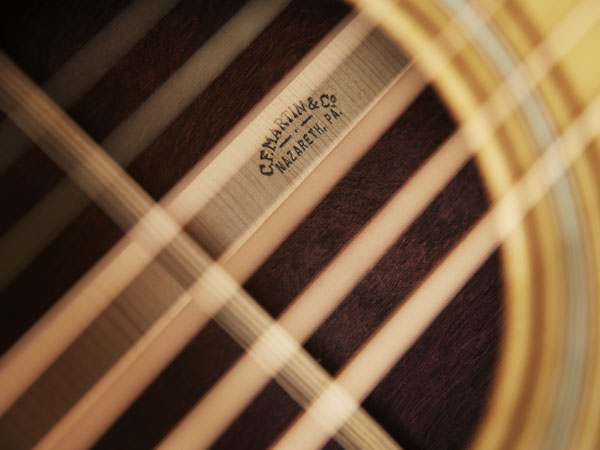
Wishlist: Martin OM-28 Authentic 1931
Martin’s Orchestra Model (OM) shape was refined through a series of experimental tenor guitars, the aim being to produce an instrument with 14 frets clear of the body and likely to appeal to the era’s banjo players. By 1930, the 14-fret ‘folk’ size flat-top was born, and this OM-28 recreates an actual instrument from the following year.
Lifting it out of its deluxe lined case, the 31 is feather light. The lacquer finish is treated to a process that leaves it satin in appearance and to the touch.
"If you thought a nigh-century-old design would play like an orange box strung with cheese wire, think again"
Running hand and eye over the guitar it looks and feels amazing (and will even more so, once the anaemic white top tames to a subtler caramel).
The satin works its magic on the neck, too; totally drag-free, you hardly know it’s there. Action is perfect on a neck that’s shaped for all, and if you thought a nigh-century-old design would play like an orange box strung with cheese wire, think again; this is the first truly modern acoustic, and it plays like a dream.
Using Martin’s Vintage Tone System, which aims to replicate the exact age of top and braces, the sound is clear, rich and articulate.
Every tonal centre is covered but none stands excessively proud. Projection is stunning, and the dynamic range and balance match far exceed anything we’ve played.
In the final analysis, Martin’s OM-28 Authentic 1931 is a fingerpicking folkie’s dream. How many of them could actually afford the four-and-a-half grand price, though, is a matter for others to discuss. Meanwhile, it’s eyebrow-raisingly good.
Guitarist is the longest established UK guitar magazine, offering gear reviews, artist interviews, techniques lessons and loads more, in print, on tablet and on smartphones
Digital: http://bit.ly/GuitaristiOS
If you love guitars, you'll love Guitarist. Find us in print, on Newsstand for iPad, iPhone and other digital readers








